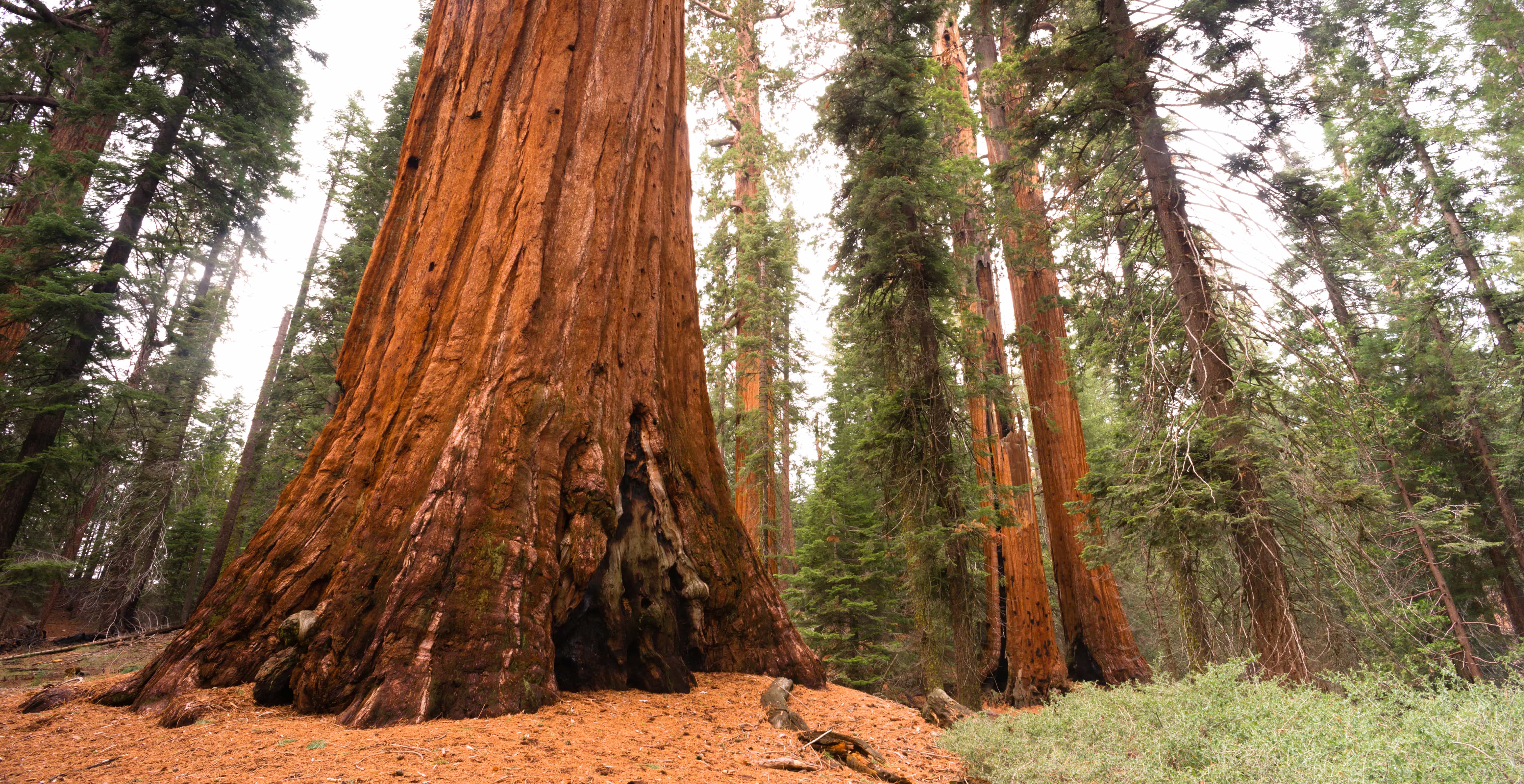A Dendrochronological Analysis of Sugar Pine from Yosemite and Sequoia National Parks
Sugar pine (Pinus lambertiana) is a keystone conifer species in the Sierra Nevada, valued for its ecological importance and distinctive structure. Sugar pine is currently experiencing great declines in the Sierra Nevada region due to climate change and a combination of disturbance agents, such as the invasive pathogen, white pine blister rust (Cronartium ribicola). Understanding the long-term growth history of sugar pine can provide valuable insights into how these forests respond to climatic variability and ecological disturbances. Michelle and Elizabeth’s research investigated tree-ring growth patterns from Yosemite National Park and Sequoia & Kings Canyon National Parks to reconstruct past environmental conditions and assess forest resilience.
The primary goals of this project include 1) developing ring-width chronologies for sugar pine to better understand long-term ecological and climatic trends 2) separating climate-driven growth signals from age-related growth decline and growth disruptions associated with white pine blister rust 3) providing historical baselines that can inform future forest management and conservation strategies in Sierra Nevada ecosystems. They processed and analyzed 180 tree cores collected during the Summer 2024 field season. During the first phase, Elizabeth focused on sample preparation: fabricating and labeling core mounts, securing the core samples, and sanding the cores with progressively finer grits to reveal annual ring structures. Once prepared, the cores were scanned at high resolution using a flatbed scanner to produce digital images for precise measurement. Using Cdendro, a dendrochronology software program, Michelle measured annual ring widths for each of the 180 cores, creating a detailed dataset of growth variability across sites.
The next step for this research is to transform these raw measurements into standardized ring-width indices (RWI). This process removes age-related growth trends and emphasizes the influence of climate variability and disease impacts on tree growth. By comparing RWI patterns across cores and sites, the team can reconstruct multi-decadal to centennial environmental histories and identify ecological signals associated with both natural variability and anthropogenic stressors.
Elizabeth and Michelle’s Impacts:
- Processed, mounted, and prepared 180 sugar pine cores for analysis
- Scanned and digitally archived high-resolution images of tree cores
- Conducted detailed ring-width measurements using Cdendro software
- Began developing standardized indices for climate and disturbance reconstruction


